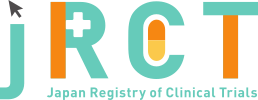臨床研究等提出・公開システム
|
Mar. 17, 2022 |
|
|
Jan. 22, 2025 |
|
|
jRCT2011210075 |
Efficacy and Safety Study of Vatiquinone for the Treatment of Mitochondrial Disease Subjects With Refractory Epilepsy (MIT-E) |
|
A Study to Evaluate Efficacy and Safety of Vatiquinone for Treating Mitochondrial Disease in Participants With Refractory Epilepsy (MIT-E) |
|
Dec. 27, 2023 |
|
68 |
|
Vatiquinone (n=34) - Age (mean): 8.7 years - Gender: Female: 16, Male: 18 Placebo (n=34) - Age (mean): 6.6 years - Gender: Female: 21, Male: 13 Primary Endpoint: Change in Frequency of Observable Motor Seizures per 28 Days During the Double-Blind Period |
|
This study was a parallel-arm, double-blind, placebo-controlled trial, with a screening phase that included a 28-day run-in phase to establish baseline seizure frequency. The 28 days immediately prior to the baseline visit were considered the run-in phase. Screening was followed by a 24-week randomized placebo-controlled phase during which subjects were randomized in a 1:1 ratio to receive either vatiquinone or placebo, with approximately 30 subjects in each arm. Randomization was stratified by disease subtype. Subjects who completed the randomized, placebo-controlled phase of the study had the option to enter a 48-week, long-term extension phase of the study to continue receiving open-label vatiquinone followed by a safety follow- up, as needed. For subjects entering the extension phase who initially received vatiquinone, they continued to receive the same dose of vatiquinone. For subjects entering the extension phase who initially received placebo, the dose of vatiquinone was determined based on body weight. |
|
A majority (>79%) of subjects in both treatment groups were reported with AEs during the double-blind and open-label treatment periods of the study. Long-term treatment with vatiquinone was well tolerated. Approximately 15% of subjects who were treated with vatiquinone during the double-blind period discontinued treatment due to a TEAE. |
|
Vatiquinone did not meet the primary endpoint of reducing the frequency of observable motor seizures per 28 days during the placebo-controlled, double-blind phase relative to placebo, but directional improvements were observed in subjects with Leigh syndrome. |
|
The study was terminated prematurely since Vatiquinone did not meet the primary endpoint. Likewise, there were no statistically significant or clinically relevant treatment-related changes in key and other secondary efficacy endpoints over the 24-week double-blind treatment period or overall treatment period. No new or unexpected safety findings were identified. |
|
No |
|
https://jrct.mhlw.go.jp/latest-detail/jRCT2011210075 |
Vinay Penematsa |
||
PTC Therapeutics, Inc. |
||
500 Warren Corporate Center Drive Warren, N.J. 07059 USA |
||
1-866-562-4620 |
||
medinfo@ptcbio.com |
||
Rosario Chikako |
||
Parexel International |
||
Kayabacho Tower Building 1-21-2, Shinkawa, Chuo-ku, Tokyo |
||
+81-80-8929-3137 |
||
Clinicaltrial-registration@parexel.com |
Complete |
Mar. 22, 2022 |
||
| Mar. 30, 2022 | ||
| 4 | ||
Interventional |
||
randomized controlled trial |
||
double blind |
||
placebo control |
||
parallel assignment |
||
treatment purpose |
||
1. Evidence of signed and dated informed consent/assent document(s) indicating that the subject (and/or his/her parent/legal guardian) has been informed of all pertinent aspects of the trial |
||
1. Allergy to vatiquinone or sesame oil |
||
| No limit | ||
| 21age old not | ||
Both |
||
Mitochondrial Disease with Refractory Epilepsy |
||
Vatiquinone: |
||
The percent change from baseline in frequency of observable motor seizures per 28 days during the placebo-controlled phase |
||
Key secondary efficacy endpoints |
||
| PTC Therapeutics, Inc. |
| Hokkaido University Hospital Institutional Review Board | |
| Kita 14, Nishi 5, Kita-ku, Sapporo-shi, Hokkaido, Hokkaido | |
+81-11-706-7061 |
|
| Approval | |
Dec. 21, 2021 |
| NCT04378075 | |
| ClinicalTrials.gov |
| 2020-002100-39 | |
| EudraCT |
USA/UK/Italy/Spain/Canada/France/Poland/Sweden |
